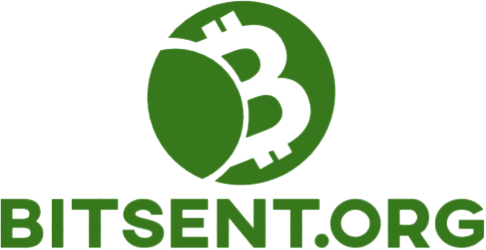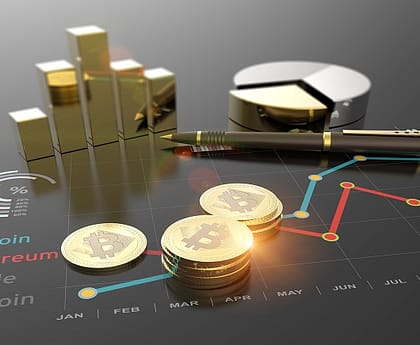What is Bitcoin Mining Difficulty?
Bitcoin mining difficulty is a measure of how difficult it is to find a hash below a given target. The Bitcoin network has a global block difficulty. Valid blocks must have a hash below this target. Mining pools also have a pool-specific share difficulty setting a lower limit for shares.
The Bitcoin network adjusts the difficulty of mining every 2016 block, based on the time it took to find the previous 2016 blocks. If the previous 2016 blocks took more than two weeks to find, the difficulty is increased. If they took less than two weeks, the difficulty decreased. The change in difficulty is in proportion to the amount of time over or under two weeks the previous 2016 blocks took to find.
The difficulty is designed to adjust every 2016 block, which is approximately every two weeks. This difficulty value updates every 2016 block to ensure that it takes approximately 10 minutes to add a new block to the blockchain.
The difficulty is a measure of how difficult it is to find a hash below a given target. The difficulty for the most recent block can be seen on any block explorer. It is important to note that the difficulty is not a measure of how many hashes are being attempted, but rather a measure of how difficult it is to find a valid block.
The difficulty is adjusted every 2016 block, which is about every two weeks. This is done to ensure that blocks are added to the blockchain at a rate of one every 10 minutes. The difficulty is adjusted based on the
What Factors Affect Bitcoin Mining Difficulty?
The difficulty of mining Bitcoin is determined by the total hash rate of the network, which is a measure of the total computing power being used to mine Bitcoin. The higher the hash rate, the more difficult it is to mine Bitcoin. As more miners join the network, the hash rate increases, making it more difficult to mine Bitcoin. This is why miners are incentivized to join the network and why the difficulty of mining Bitcoin increases over time.
The difficulty of mining Bitcoin also depends on the price of Bitcoin. When the price of Bitcoin increases, miners are incentivized to join the network and the difficulty of mining Bitcoin increases. Conversely, when the price of Bitcoin decreases, miners are less incentivized to join the network and the difficulty of mining Bitcoin decreases.
In addition to the total hash rate and the price of Bitcoin, the difficulty of mining Bitcoin is also affected by the number of new blocks being added to the blockchain. As more blocks are added to the blockchain, the difficulty of mining Bitcoin increases. This is because it becomes more difficult to find a hash below the target as the total number of hashes
What is the Impact of a New High Difficulty Level?
The introduction of a new high-difficulty level can have a significant impact on the gaming experience. This can be both positive and negative, depending on the preferences of the individual player. On one hand, the increased challenge can provide an exciting and rewarding experience, while on the other hand, it can be too difficult for some players and lead to frustration.
A new high-difficulty level can add a great deal of replay value to a game. For those who are looking for a greater challenge, the higher difficulty can provide a more intense and rewarding experience. It can also add a new layer of strategy and tactics, as players must think more carefully about their choices and how to approach each situation. This can be especially beneficial for those who are looking to improve their skills, as the increased difficulty can help to hone their abilities.
However, the introduction of a new high difficulty level can also be a source of frustration for some players. For those who are not used to playing at such a high level, it can be difficult to adjust and may lead to feelings of frustration and defeat. This can be especially true for those who are new to the game, as they may not be familiar with the strategies and tactics necessary to succeed.
The impact of a new high-difficulty level can also depend on the genre of the game. For example, an action-adventure game may be more forgiving than a strategy game, as the former requires less precise decision-making and the latter requires more
What are the Benefits of Mining Bitcoin at a High Difficulty Level?
Mining Bitcoin at a high difficulty level can be a great way to maximize profits and increase the security of the Bitcoin network. Mining Bitcoin at a high difficulty level requires significant computing power and energy, but the benefits of doing so can be substantial.
The first benefit of mining Bitcoin at a high difficulty level is that it increases the security of the Bitcoin network. By mining at a higher difficulty level, miners are able to process more transactions, which makes it more difficult for malicious actors to attack the network. This increased security helps to ensure that Bitcoin remains a secure and reliable form of digital currency.
The second benefit of mining Bitcoin at a high difficulty level is that it can be more profitable. When the difficulty level is high, miners have to put in more effort to mine Bitcoin, which means they are rewarded with more Bitcoin for their efforts. This makes mining at a high difficulty level more profitable than mining at a lower difficulty level.
The third benefit of mining Bitcoin at a high difficulty level is that it can help to decentralize the Bitcoin network. By mining at a high difficulty level, miners are able to spread out their computing power and energy consumption across the network, which helps to ensure that no single miner or group of miners can control the network. This decentralization helps to ensure that the Bitcoin network remains secure and reliable.
Overall, mining Bitcoin at a high difficulty level can be a great way to maximize profits and increase the security of the Bitcoin network.
What Strategies Can Miners Use to Adapt to a High Difficulty Level?
Mining cryptocurrency is a process that requires miners to solve complex mathematical problems in order to earn rewards. As the mining process becomes more competitive, the difficulty level increases. This means that miners need to find more efficient and effective strategies to remain competitive and profitable.
One of the most effective strategies miners can use to adapt to a high difficulty level is to invest in more powerful mining hardware. By investing in hardware with higher hash rates, miners can increase their chances of solving complex mathematical problems and earning rewards. Additionally, miners can also invest in specialized mining software that can help them optimize their mining operations.
Another strategy miners can use to adapt to a high difficulty level is to join a mining pool. By joining a pool, miners can combine their resources and increase their chances of solving mathematical problems and earning rewards. Additionally, miners can also benefit from the collective knowledge of the pool members, which can help them optimize their mining operations.
Finally, miners can also use alternative strategies such as cloud mining or staking. Cloud mining allows miners to rent mining hardware from a third-party provider, which can help them reduce costs and increase their chances of earning rewards. Staking is another strategy miners can use to earn rewards without having to solve complex mathematical problems. By staking their coins, miners can earn rewards based on the amount of coins they have staked.




